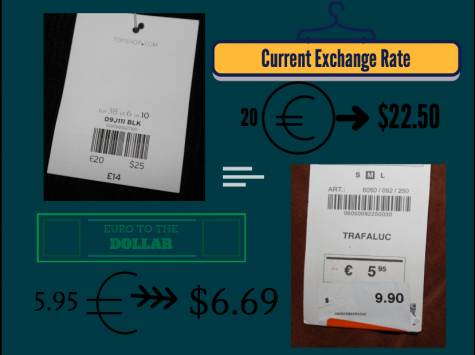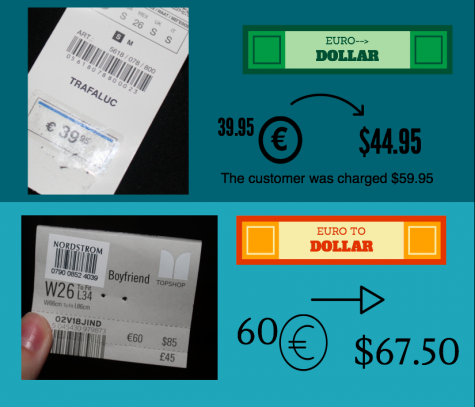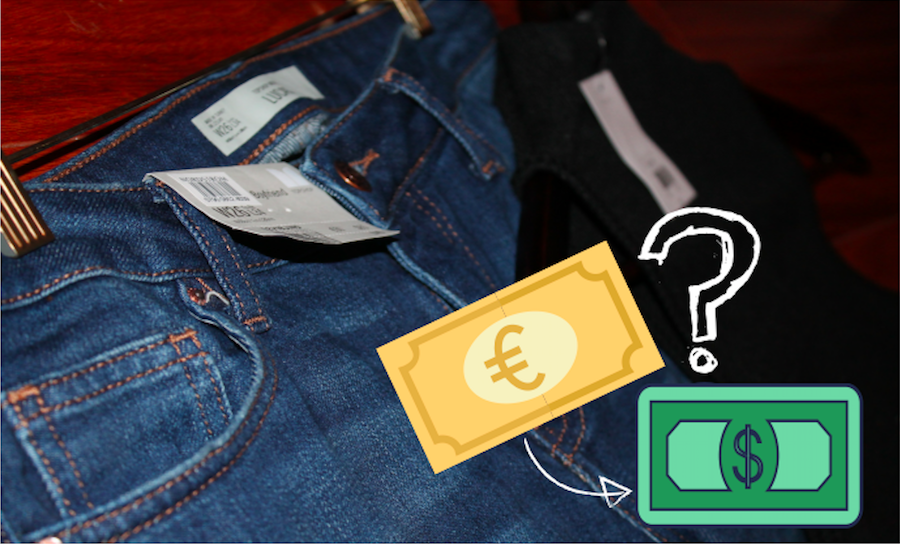Price Discrepancies On Clothing Tags Cause Controversy
Credit: Nicole Browne/Achona Online
Zara is currently being sued for “deceptive” pricing.
Have you ever looked at a European clothing item and thought “This conversion from euros to dollars on the price tag doesn’t seem quite right…”, but then blew it off as a silly mistake on your part. Well it turns out you may be onto something.
Clothing brands that include prices in terms of the dollar and the euro on the price tag base the price on the currency exchange rate at the time the item was manufactured. However, since the exchange rate changes often, customers may notice a rather large discrepancy between what they pay in the US versus what people in other countries are paying for the same item.
The value of different currencies change in relation to each other based on various inflation rates. For example, when the United States becomes highly inflated, a singular dollar will be worth less in relation to a single euro. Visa versa, the USD can be strengthened if it’s worth goes up more than the Euro at a specific time. So yes, it is true that the Euro can be worth more than a single dollar, but, as it happens, over the last two years the Euro hasn’t been worth more than 1.15 dollars.
Currently the clothing brand Zara is being sued for “bait and switch” which is in violation of federal law. “Bait and switch” is a term to describe the act of charging more than the exchange rate. Zara has denied overcharging their customers, however it is obvious that even in Tampa, the prices do not match up. According to an article by the Huffington Post, Zara needs “to start accurately converting its prices right at the register.”
Below are some examples of items that have been recently purchased from both Zara and Topshop (another brand with European pricing) at the International Plaza.
Look to the price tag to see what the stores charged in dollars for the clothing item, and look on the side for what they should have charged based off the current exchange rate.


All of these items were purchased within the last few months. During that time, as stated before, the euro was never worth more than $1.15. However, the exchange rates recorded on these price tags range from the euro valuing at $1.25 to $1.66! This means that for certain items, customers in the US (and me evidently) are paying the price and a half for the same exact products.
Until clothing brands find a way to convert the euro amount to dollars when customers check out at the register, it seems like the best advice for consumers is to be aware of this controversial pricing practice and avoid it if possible.

Nicole Browne is a second year staffer, senior Editor-in-Chief of Academy’s Online Newspaper. When not spending her time at crew practice and regattas,...








